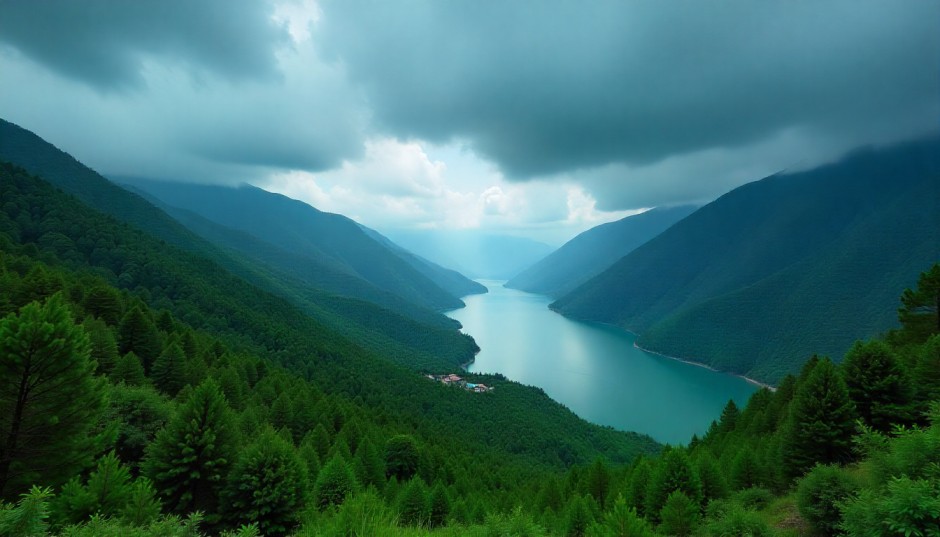
Blog
We keep you up to date on the most recent real estate news and events.
The Shivalik Advantage: Why Central Vista Plots Offer Views You Can’t Replicate
Imagine stepping out onto your balcony each morning and being greeted not by blaring traffic or concrete sprawl, but by the soft outline of the Shivalik hills against the sky. The air is cooler, fresher, and tinged with the scent of pine and wildflowers. A nearby dam glistens in the sun, while a forest canopy hums quietly with birdsong. This is not a hill station weekend escape—it is everyday life for those fortunate enough to call Panchkula’s Central Vista home.
For decades, proximity to nature has been a luxury only accessible to the few. In India’s rapidly urbanising cities, where high-rises crowd skylines and AQI levels climb daily, properties that integrate mountain views, forest adjacency, and water bodies are becoming priceless. Panchkula’s Central Vista plots, nestled at the Shivalik foothills, represent one of those rare opportunities where geography and real estate meet to create enduring value.
Living at the Doorstep of the Himalayas
- The Shivalik Hills are the southernmost range of the Himalayas, stretching roughly 2,400 km, 10–50 km wide, with average elevations of ~600–1,200 m, forming the transition between plains and the higher Himalayas.
- Panchkula sits on these foothill “offshoots,” which is why the city reads greener and cooler than the surrounding plains and offers natural gradients that elevate sightlines over tree canopies and low ridges.
- This geomorphology also explains the network of seasonal streams (choes) and the Bhabar–Terai transition that brings springs and marshes at the foot of the hills—ecology that underwrites long, open view corridors rather than continuous built massing.
Panchkula’s geography, simply put
- Location: Northern Haryana, adjoining Chandigarh; commonly described at the foothills of the Shivalik range, with an urban–natural blend rare for a district HQ city.
- Terrain: A mix of plains, hills, and forests; the Ghaggar basin and choes shape drainage patterns and greenery belts around urban edges.
- Elevation and proximity: Close to Chandigarh and its northern green edges, which further extends the visual belt of hills and woodlands from plot perimeters.
Protected Forests That Safeguard Your Views
- Khol Hi‑Raitan Wildlife Sanctuary begins barely half a kilometre from Panchkula on Morni Road, covering about 4,883 hectares, with an additional 1,320‑hectare eco‑sensitive buffer; the sanctuary is part of the same Shivalik belt that supports leopards, sambar, and a broad assemblage of fauna moving across contiguous habitats.
- Bir Shikargah Wildlife Sanctuary (approx. 767.3 hectares) at Pinjore also lies within this belt and is an officially declared eco‑sensitive zone, limiting disruptive development within 5 km—another structural reason long-view greens persist.
- These forests ensure that your front view is permanent and protected—not just a landscaped patch that can change over time.
Reservoirs, choes and the view logic
- Closer to Central Vista, the Kaushalya Dam—an earth-fill embankment completed in 2012—anchors the landscape with its reservoir, adding water-edge vistas to the Shivalik forest backdrop.
- Downstream, Sukhna’s floodgates are actively managed—opened nine times in one 2025 monsoon season—to release excess water into the Ghaggar via Sukhna Choe, emphasising that this lake–stream–river system is a living hydrology shaping land use and view corridors on the Panchkula edge.
- The presence of managed wetlands, reserve forest, and sanctuary buffers around the catchment produces wide, open horizontals in many directions—long water‑green‑hill views that are hard to substitute with man‑made amenities inland.
Morni and Tikkar Tal: the hill backdrop
- Morni Hills, at about 3,600 feet (≈1,097 m), form Panchkula district’s own hill station—the only one in Haryana—with pines on crests, mixed deciduous on slopes, and two linked lakes (Tikkar Tal) whose levels mirror each other despite a hillock between them, adding a dramatic water‑over‑forest composition to the skyline.
- The area’s biodiversity—quails, sandgrouse, doves, jackals, hyenas, and more—attests to intact habitats, and for everyday living, this means morning vistas carry real ridgeline contours and tree silhouettes rather than bare horizons.
- Crucially, Morni’s proximity—about 45 km from Chandigarh—makes it part of the wider recreational and visual belt for Panchkula residents, not a faraway weekend abstraction.
Geography You Can’t Manufacture
- Physical rails: The foothill terrain naturally creates slopes, streams, and open corridors for views—conditions impossible to replicate on flat plains.
- Policy rails: Wildlife sanctuaries and eco‑sensitive zones impose height, density, and land‑use constraints that protect light, air, and greenery dominance at scale—unlike private landscape pockets, these are state‑notified protections.
- Hydrology rails: Reservoirs like Sukhna, silt management buffers, and active floodgate operations reinforce a wetland‑woods mosaic along the foothill rim, keeping wide‑open sightlines unavoidable rather than optional.
How Central Vista Plots Capture the Shivalik Advantage
- In Panchkula, homes near valleys and forests have become the most sought-after, driving strong demand in integrated townships.
- Projects like Trident Hills (≈200 acres in Sector‑4, PKUC) and DLF’s Valley precincts in Sectors 2–3 have marketed connectivity to sanctuaries and hill views, mirroring what any Central Vista‑labelled plotting within the same geography would leverage: proven demand for green‑facing, low‑pollution living with Chandigarh access.
- For buyers, this means a plot proposition tied to the same foothill physiography and sanctuary proximities is tapping underlying, non‑fabricable advantages that already clear the market test in this corridor.
Climate and air‑quality tailwinds
- Shivalik adjacency modulates microclimate—cooler evenings, better ventilation, and vegetative buffers—advantages regularly cited in Chandigarh’s planning references where hill views and breezeways were intentionally retained from the outset.
- Haryana’s forest and tree cover stands at ~7.3% of geographical area (ISFR 2021), with Panchkula leads the state with ~43% forest cover.
- The contrast with the plains is stark: where many cities must create parks to simulate nature, Panchkula’s north‑east has living, contiguous forest and wetland systems that preserve cooler, clearer sightlines by design and by law.
A Natural Water System That Protects the Land
- Sukhna’s catchment re‑vegetation of 25.42 km² and designation as a National Wetland underscore a policy and engineering commitment to the lake’s longevity—translating to durable water and landscape views rather than speculative lakes on reclaimed pits.
- Active monsoon gate operations coordinated across Chandigarh, Mohali, and Panchkula administrations highlight institutional capacity to manage extremes—reassuring for plot buyers that the “blue‑green edge” is maintained, not accidental.
- CPCB and state action plans around the Ghaggar basin further indicate ongoing basin‑wide scrutiny; while challenges exist downstream, the monitored head‑reach near Sukhna Choe upstream of urban effluents remains the scenic and hydrological anchor for view‑rich neighbourhoods.
Why Buyers Pay More for Shivalik-Facing Homes
- Panchkula’s premium launches and price traction increasingly reference hills, forests, and clean air as their value story, from Pinjore–Kalka sectors to valley‑branded precincts; this is the buyer’s revealed preference, not just brochure copy.
- Local coverage and portals consistently tie absorption to this setting and to tri‑city connectivity, reinforcing that “Shivalik adjacency” is both a lifestyle and a liquidity advantage for residential plots and floors.
- For a developer‑run website narrative, this alignment between geography, policy protection, and price performance is the strongest proof that the view‑led proposition has legs in the Panchkula context.
What Everyday Life Feels Like Here
- Everyday wellness: walking routes with real canopy shade, visual relief toward hills, and birdlife tied to sanctuary edges—these are long‑term, zero‑capex wellness dividends built into the site rather than club add‑ons.
- Design flexibility: natural gradients and green belts let homes pick up framed vistas—fronts to lake winds, rears to ridge lines—enhancing resale appeal beyond internal specifications.
- Future‑proofing: eco‑sensitive buffers and notified sanctuaries make the chance of a ten‑storey wall appearing in front of the plot far lower than in unprotected, flat peri‑urban belts, supporting view stability and value retention.
Why Central Vista plots stand out
- The promise isn’t just “near a park”; it’s plots cued to a natural amphitheatre—the Shivaliks—where sanctuaries, reservoirs, and choes enforce openness at landscape scale, creating a consistent canvas of hill‑and‑forest views.
- Panchkula’s seat at this edge ensures view stability anchored by conservation and hydrology, not by HOA rules, and that’s exactly the kind of moat high‑intent buyers pay for and hold through cycles.
- In a market where many “green” claims are inward‑looking, the Shivalik belt gives Central Vista plots an outward‑looking horizon‑deep green that is naturally scarce—and scarcity is the wellspring of premium in real estate.
Views as Long-Term Wealth
In real estate, most amenities age. Clubhouses need upgrades, interiors lose fashion, and even high-street retail shifts. What rarely ages is a horizon that carries hills, forests, and water. Buyers intuitively recognise this, which is why homes with guaranteed natural outlooks trade at premiums and stay liquid in resale markets. For families, such views also build a lived legacy: children grow up with nature as backdrop, morning walks have real shade, and daily stress unwinds against landscapes that no developer can imitate. Central Vista’s Shivalik-facing plots, therefore, are not just lifestyle purchases but long-term wealth instruments, securing both wellness and enduring value.
Bottom line
If the brief is views that outlast fashions, the Shivalik foothill edge of Panchkula delivers an unusually resilient mix of geology, protected forests, and managed waterscapes—advantages that Central Vista plots can crystallise into everyday living, with sightlines that are not merely pretty but fundamentally hard to reproduce elsewhere in the region’s real estate map.
Sources and links
- https://haryanatourism.gov.in/destinations/panchkula/
- https://en.wikipedia.org/wiki/Sukhna_Lake
- https://en.wikipedia.org/wiki/Sivalik_Hills
- https://en.wikipedia.org/wiki/Khol_Hi-Raitan_Wildlife_Sanctuary
- https://panchkula.net/about-us/
- https://cpcb.nic.in/openpdffile.php?id=UHVibGljYXRpb25GaWxlLzk1Nl8xNTQ0NDI4NzYxX21lZGlhcGhvdG8yNTkyMi5wZGY
- https://wildtrails.in/khol-hi-raitan-wildlife-sanctuary/
- https://en.wikipedia.org/wiki/Bir_Shikargarh_Wildlife_Sanctuary
- https://wildtrails.in/bir-shikargah-wildlife-sanctuary-vulture-breeding-center/
- https://indianexpress.com/article/cities/chandigarh/after-15-years-sukhna-lake-floodgates-opened-9-times-in-a-season-10228353/